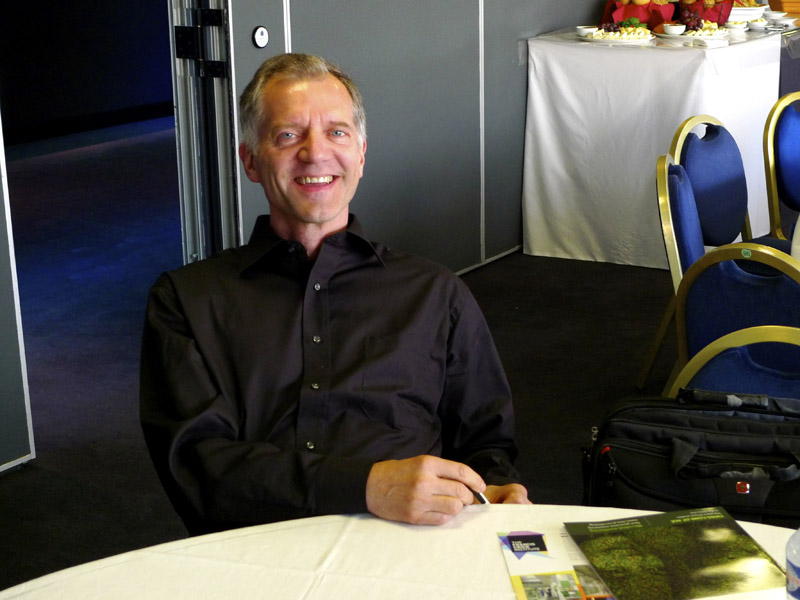Matthias Mann on mass spectrometry, proteomics and EMBL

Matthias Mann met us at the EMBL get-together in Nice to talk about his contribution to the development of mass spectrometry and proteomics, and to the role of EMBL in his career.
Tell us about your EMBL days:
“I was a bit of an outsider as I came from instrumentation and physics when Wilhelm Ansorge hired me as a Group Leader in 1992. I started out under the typical EMBL time pressures with no publications in the first two years. This was because I took a big risk: to examine proteins using my own new methods. If I’d done this anywhere else, it would have taken ages for anything to materialise. At EMBL, scientists like Matthias Hentze and Marino Zerial for example, put my methods to optimal use. We had nine top publications in one year, making the technology famous very quickly. This wouldn’t have happened anywhere else.
Our technology also influenced the direction of the work of other EMBL scientists. Angus Lamond, for example, was doing splicing in the lab next to mine. He got interested in our technology, and eventually changed half his research to work on proteomics. The same happened with Giulio Superti-Furga, who then founded Cellzome. Both have remained my long-term collaborators. Angus is now pioneering beautiful new technology based on proteomics.”
What do you do at the Max-Planck Institute for Biochemistry in Munich?
“I’m continuing the theme I’ve always worked on: as a physicist (and mathematician) I was involved in the discovery of electrospray during my PhD. I developed this in Denmark, and then applied it to biology at EMBL. Now we’re applying it to medical conditions at the MPI. So basically I started my career investigating physical phenomena, moved to developing relevant instrumentation, which I then applied to isolated proteins, and finally to medical conditions. For example, we now classify cancer patients: what subtypes they have, and how they should be treated.
My department (the Department of Proteomics and Signal Transduction) spends half its time continuing to develop this technology, and half researching new areas possible only with this technology. You can read about it in the EMBO Molecular Medicine, “Proteomics for biomedicine: a half-completed journey.”
What was the most crucial time in your life?
“EMBL was one of the two most important stations in my life (my PhD was the other), giving me the opportunity to develop our technology and to meet the people who are still my main network in Europe. We were all in this hot house of talent together at a certain impressionable time in our lives, and have gone on to do excellent things.”
What kind of a session or topic would attract you to the EMBL reunion in 2014?
“The topic of EMBL as a role model. I’m interested to explore the elements which make EMBL an incubator of talent: recruiting group leaders internationally, putting them under time pressure in an interdisciplinary environment where change and expectation of excellence is the norm.
15-20 years ago EMBL was one of the few places that could hold its own next to the LMB and Cambridge. 10 years ago, when the EU was in a bad shape in terms of science funding, EMBL had a significant role in changing this through the ERC. EMBL has also played a major role in the MPI’s and this is well acknowledged. More than 20 MPI Directors come from EMBL. They serve to infuse the spirit of EMBL into the MPI. So EMBL has paid for itself many times over by shaping up the research environment, and as an upcoming Director I am fascinated to see how we can transplant more of that spirit to our talent development.”
In 2014 Matthias Mann will join the three-man managing board of the MPI for Biochemistry, before becoming its Director in 2015.